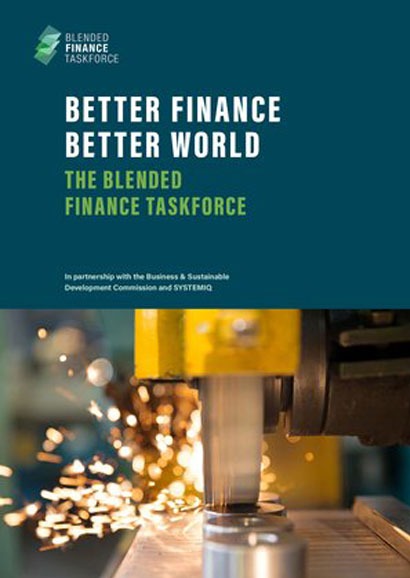The Blended Finance Taskforce was set up to mobilise private capital for the Sustainable Development Goals – a universal call to action to end poverty and protect the planet. The Taskforce brings together leaders from business, finance, development, policy and civil society to help overcome barriers to investing in high impact sectors and geographies.
Mobilising private capital for the global goals
12
Why Blended Finance?
Blended finance is the use of development capital to mobilise additional private finance for SDG-related investments.
Investment in sustainable, climate resilient infrastructure is arguably the single best way to achieve the SDGs. The lion’s share of this is needed in developing countries. We are currently only meeting around half of the SDG funding requirements. There is a multi-trillion-dollar gap every year which the public sector cannot fill by itself.
Blending helps make assets in emerging markets “investable” by large-scale, mainstream capital. Clean energy, healthcare, urban resilience and sustainable land-use can all benefit.
There are good examples of blended finance at work. Guarantees, insurance, currency hedging, technical assistance grants and first loss capital from development agencies, development banks and forward-leaning foundations are crowding in commercial investment for developing countries.
The Action Programme is championed by leaders from across the investment and development finance community including HSBC, Credit Suisse, Aviva, Investec, Allianz, EBRD, the IFC and the Rockefeller Foundation. Download an introduction here.
The programme builds on the key conclusions of the Taskforce’s flagship report, “Better Finance, Better World”.
- Momentum is building in the $50+ billion blended finance market. As investors look to take advantage of risk mitigation tools, and more development capital is made available for blending. we need more multi-billion dollar vehicles.
- Investors mostly want liquid, investment grade assets. Blended finance can improve the risk/return profile of infrastructure assets in emerging markets to “tip the scales” from below-investment-grade.
- Development banks play a central role in scaling up the blended finance market. MDBs currently mobilise overall less than $1 of private capital for every development dollar. Setting ambitious targets will change the way development banks do business with the private sector. They should standardise products, reduce transaction times, pool assets and recycle them off their balance sheets.
- Private investment will flow if there are bankable projects – a strong enabling environment is critical to build pipeline. Developing countries need to get policy and institutional mechanisms right and should develop blended finance institutions which can link policies to sectoral strategies, investment plans and sustainability standards.
- Scaling up the blended finance market can increase the global rate of growth, deliver the SDGs (including on climate) and strengthen long-term returns for savers. For this to happen, leaders across the whole investment system will need to take collective action.

